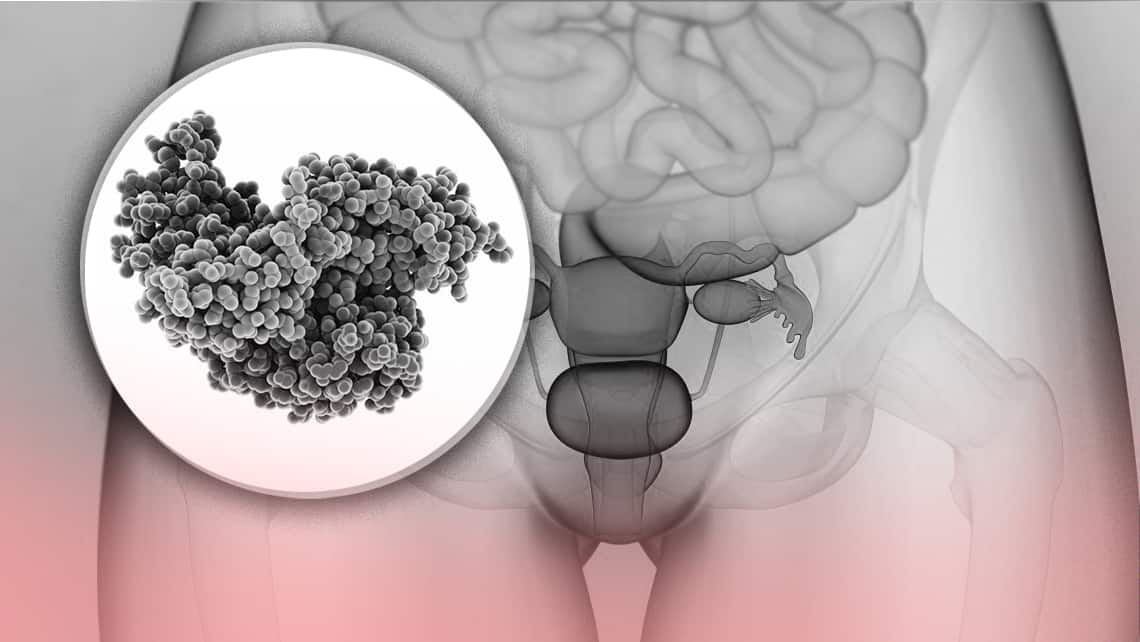
What is the FSH and what is its function?
Follicle-stimulating hormone (FSH) is essential to reproduction. It is produced by the pituitary gland situated just below the brain (behind the palate) and is released into the bloodstream. The hormone regulates the ovaries and is involved in the processes dealing with the growth and selection of the follicle which will later release the egg during ovulation.
Fluctuations in FSH levels are responsible for menstrual cycles and also for the fact that only one egg is produced during each cycle. It is essential, therefore, that there is constant dialogue between the ovaries and the pituitary gland so that the latter can consistently produce the correct quantity of FSH for a normal cycle.
This permanent exchange means that, in cases of poor ovarian function, the pituitary gland will try to compensate for this situation by increasing FSH excretion levels. It is for this reason that FSH levels in women going through the menopause are 20 times greater than in women whose ovaries are functioning normally. Therefore, when the ovary does not respond correctly, FSH increases significantly and systematically.
This relationship between FSH levels and ovarian failure has been used in ovarian reserve evaluation. The latter is understood to be the number of eggs remaining in the ovaries and also the quantity of eggs that can be retrieved when ovarian stimulation is carried out for in vitro fertilisation (IVF).
Therefore, the higher the levels of FSH, the poorer ovarian reserve will be and the lower the number of eggs that will be retrieved during IVF. It also implies a greater risk of poor response.
FSH hormone levels
FSH levels vary across the menstrual cycle and they can vary from one laboratory to another depending on the detection technique used. The reference values used in our laboratory are indicated in the following table:
Serum levels of follicle stimulating hormone -FSH-.
| Follicular phase (prior to ovulation) | 3,03-8,08 UI/l |
| Midcycle | 2,55-16,69 UI/l |
| Luteal phase (following ovulation) | 1,38-5,47 UI/l |
| Menopause | >26,72 UI/l |
Limitations of FSH analysis
For many years, measuring FSH has been the most reliable marker in evaluating ovarian reserve, for predicting ovarian response to stimulation and for deciding which stimulation protocol is the most suitable for patients undergoing IVF treatment. However, measuring FSH as an ovarian response predictor has serious limitations:
- It needs to be carried out at a specific point during the menstrual cycle (between the second and fourth day of the cycle) because the levels vary greatly throughout. Care needs to be taken since measurements taken at the mid-point of the cycle can lead to a patient being incorrectly categorised as a poor responder.
- Cycles can vary greatly. Therefore, a single, isolated value can lead to incorrect diagnosis as a poor responder.
- Last of all, even with constant measurements taken at the right time during the cycle, the ability to predict ovarian response is very limited and, therefore, its reliability in terms of diagnosis is low.
As a result of the limitations of determining FSH in evaluating ovarian reserve, currently most clinics specialised in reproduction use anti-Müllerian hormone along with an antral follicle count (an ultrasound which needs to be carried out under basal conditions or, in other words, between the second and fourth day of the menstrual cycle) in order to give experts an understanding of a woman’s ovarian reserve. As such, medical decisions can be taken based on the results obtained.
Dr Ana Fabregat, a pharmacist at Instituto Bernabeu.
